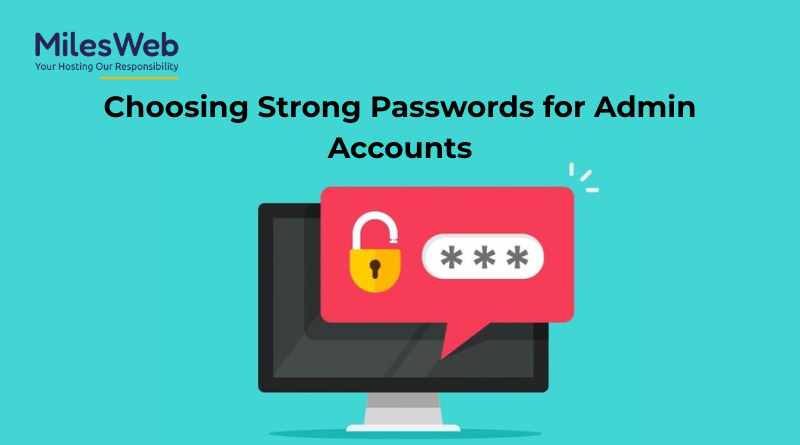Cyber threats are increasing as digital complexity continues to rise. Admin accounts are vulnerable to more cyber threats. They contain sensitive personal information like passwords and profile details. These are assets for cybercriminals; hence, they primarily target them. But one of the effective ways to secure them is to choose a strong password. Weak or reused ones serve as an attacker’s gateway, potentially compromising the entire system or network. Same kind of security measures you need to follow while choosing the best Python web hosting.
With the increase of brute-force attacks, credential stuffing, and phishing tactics, using strong passwords composed of upper and lowercase letters, numbers, and symbols will greatly reduce the chances of unauthorized access. In this blog post, we will discuss why you should use a strong password, how passwords are deemed secure, and how to organize password control to maintain the integrity of your administrative controls even if you move website free.
The Importance of Strong and Secure Passwords
Any password that is difficult to crack is considered a strong and secure password. It contains a strong combination of special characters or numbers, which is challenging for hackers to crack. Passwords like your birthdate/year or serial numbers like “123456” are easy to guess by hackers. They can easily access accounts having these simple passwords.
Weak passwords lead to data breaches. Hence, strong passwords are crucial because they prohibit unauthorized access to personal information and accounts. Protecting your financial email and social media accounts is something that needs to be implemented. A secure password makes it difficult for hackers to gain access to these accounts and steal personal information or use the account for malicious purposes.
How to Secure Your Admin Account?
Use a Long Password with a Mix of Characters
Complex and longer passwords are harder to crack. Put 12 characters or above 16. Build a combination of uppercase and lowercase letters, numbers, and special characters like @, #, $, or! Implementing it will reduce brute-force attacks.
A password like M!k@sec&1234@ is difficult to crack in comparison to admin123. Don’t replace letters with common substitutes @ for a, 0 for o, etc., because these patterns are well-known by attackers. Focus on randomly-made patterns or passphrases that are long and, of course, meaningless to anyone except you.
Avoid Using Personal Information
Don’t put any personal information in the password. It includes pet names, favourite sports teams or birthdays. Data of this kind can usually be obtained from social media or public records, making your password open to targeted attacks.
For admin accounts, do not use the username, domain, or company name in any variation. The simple pattern of Admin@2025 or YourCompany123 can be guessed easily. Strong passwords need to appear random and not have any association with previously known persons or publicly available information.
Do Not Reuse Passwords Across Multiple Accounts
It is not safe to use the same password for both admin and ordinary user accounts. Attackers may use the stolen credentials from one service to try to log into other sites, a tactic called credential stuffing.
Admin accounts are generally assigned to people who take care of important systems. Choosing the same password for many accounts can jeopardize all the affected systems. Creating a distinct password for each admin account can protect your online systems from being compromised.
Use a Password Manager
Unique passwords and long ones are impossible to memorize. So this is where the password manager comes in, and it securely stores login credentials to generate strong, random passwords when required.
Use password generator tools to get secure passwords. These tools encrypt the data and provide easy access, maintaining good-quality standards. For admin-level access, many password managers also offer multi-user support and secure sharing options.
Change Passwords Regularly and Monitor Access
You need to update your passwords once or twice a month. It is a wise decision to rotate admin passwords periodically, especially if there’s a breach. Based on your risks, decide if quarterly or bi-annual reminders are better for reviewing data security operations.
Also, monitor situations where login attempts are made or where access logs show something unexpected. On most modern app platforms, users will be informed instantly if someone logs in with their password or from a new device.
Wrap Up
Securing admin accounts begins with one of the simplest yet most critical actions: choosing a strong password. In an age where cyberattacks are becoming increasingly sophisticated, relying on weak or reused credentials is a serious vulnerability. By implementing long, complex, and unique passwords along with best practices like using a password manager and enabling multi-factor authentication, you significantly reduce the chances of unauthorized access to your most critical systems.
Strong password hygiene isn’t just a technical recommendation; it’s a necessary component of your overall cybersecurity strategy. Admin accounts often hold the keys to your entire digital infrastructure, so treating their security with the highest priority is essential. With the right approach, you can protect your organization from data breaches, system downtime, and costly cyber threats, starting with something as foundational as a well-crafted password.
